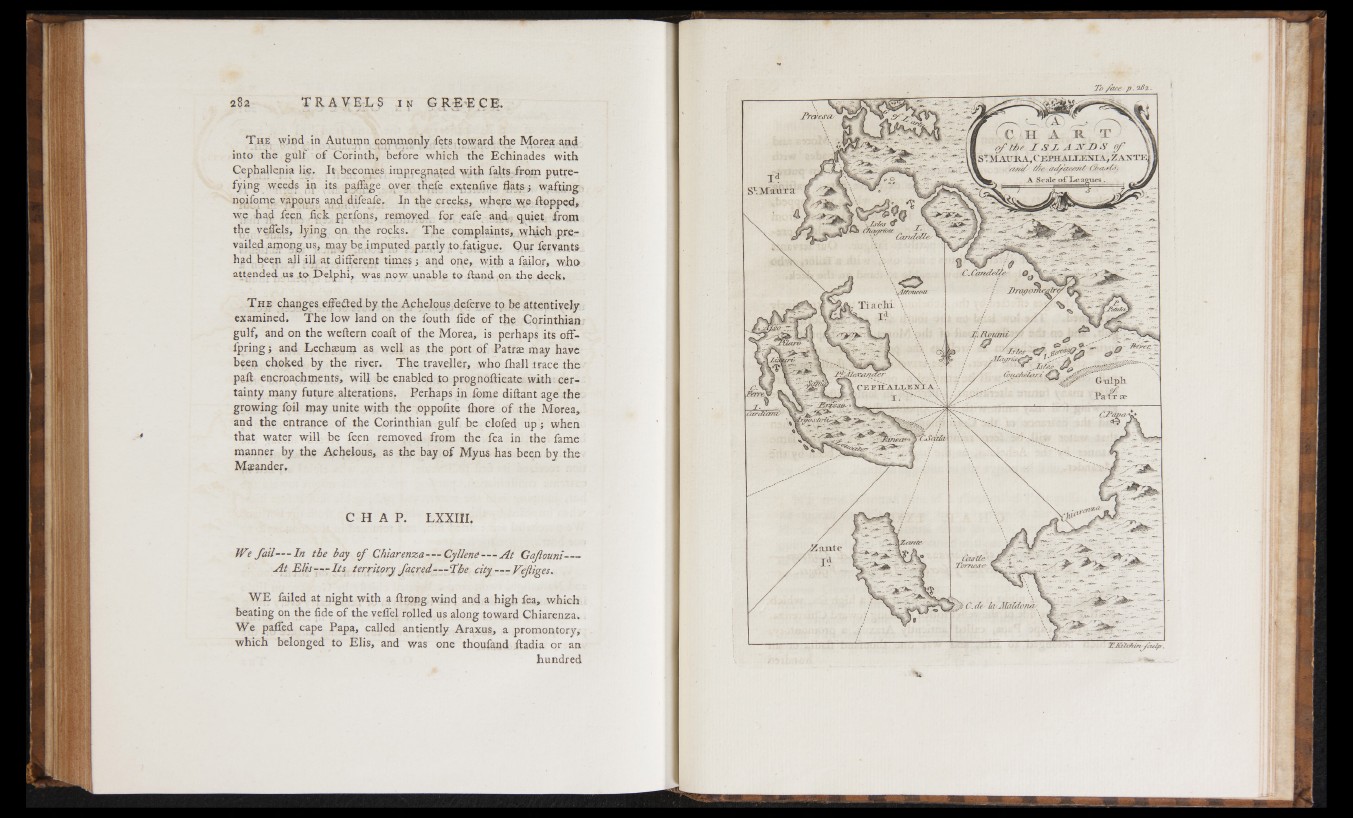
Tug, . ^ 4 --in Autumn commonly fets toward the ]V|qrjeg,^p4 .
into til# giilF~ o f Corinth, before which the Echinades with
Cephallenia lig. It^^geog^s irttp^egttg.|#4 Wth ffjfefjj&qgi pqtte-
-vv;##4f ip its p^^ge. ^v^; tn^|e e^tgpfi^e fl&te-A waftingnoifome
vapours and difeafe. In t]ge crepkg, wh^tR.Whlftqpped,
w,?..h£$ f ? ^ f§£ jeafe, apch <wje$. frqro
t^e v#^#is, lying. Qa thje rocks.. T|>je. complaints, whichtp*8r.
vgt|a^apigB^^j| Jfg^y b#;,impu^e4p£r,tly sto-fa^igy#. fervatits.
h|dr^eqp a^l ■ iljlj.at thps$j_ apd ofy^w,it& a f&ilqr* who
attende4.ps JAl^eiphi» was^oyr unable to ftand on the deck.
Tty? changes.edqftsd. by, the Ayheh?flSjde$erye to h# attentively
examined. The low land on the fouth fide o f th#,Corinthian
gulf, and on the weftern coaft of the Morea, is perhaps its ofF-
fjjr-ingj and Lechscuip as well, as ,the port of Patrse may have
beep choked by the riyer. The traveller, who fhall trace the.
pglh encrpachpients, will be enabled to prQgndfiieato.withi certainty
many futpte .alterations. Perhaps in. feme di&antagethe
growing foil may unite with the.oppofite fljore o f the Morea,
and the entrance o f the Corinthian gulf, be clofed up* when
* that watef wglb b# fe^jggmMBAM&oaa.^e
manner by the Aphelous, as th# bay of Myns ha& been by the
Maeander.
C H A P . LXXIII,
We fa il— In the bay o f Qhiarenza-r-Gyllene---AtGaflw ni-~
A t 1% tctfikyrg f^ e f-r -X h ^ dfy-rsJifftiges.
W-£ failed at night with. ^ E^Rg w-ifldaAd a high fes, which
beating on the fide of the vefle^ rplledus along toward Chiarenza.
We pafied cape Paps, called antiently Araxus, a promontory,*
which belonged to Elis, and was one thoufand jtadia qr an
hundred